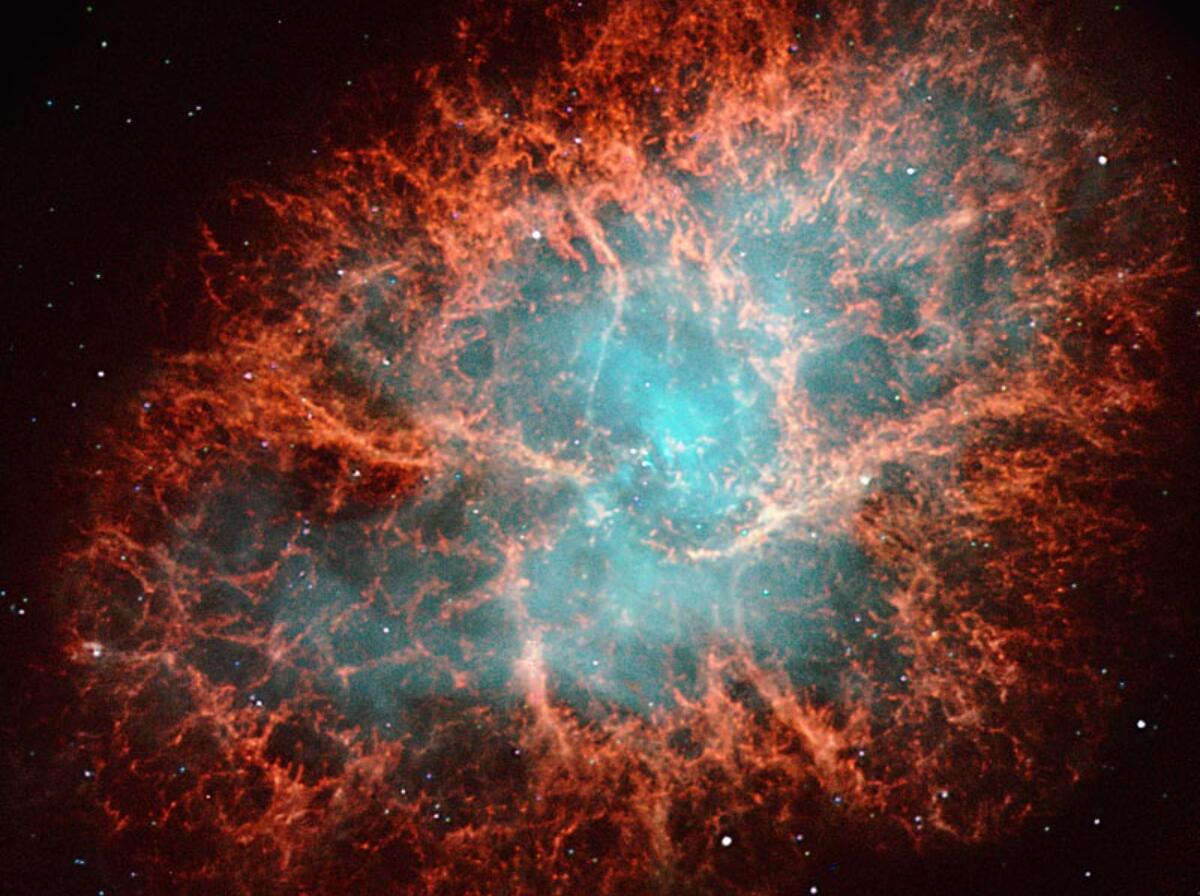
The Large High Altitude Air Shower Observatory (LHAASO), one of China's key national science and technology infrastructure facilities, has accurately measured the brightness over 3.5 orders of magnitude of the standard candle in high-energy astronomy, thus calibrating a new standard for ultra-high-energy (UHE) gamma-ray sources. The standard candle is the famous Crab Nebula, which evolved from the "guest star" recorded by the imperial astronomers of China's Song Dynasty.
LHAASO has also discovered a photon with an energy of 1.1 PeV (1 PeV = one quadrillion electronvolts), indicating the presence of an extremely powerful electron accelerator—about one-tenth the size of the solar system—located in the core region of the Crab Nebula. The accelerator can energize electrons to a level 20,000 times greater than what CERN's Large Electron–Positron Collider (LEP) can ever achieve, thus approaching the absolute theoretical limit posed by classical electrodynamics and ideal magnetohydrodynamics.
Results will be published in Science on July 8. The LHAASO International Collaboration, which is led by the Institute of High Energy Physics (IHEP) of the Chinese Academy of Sciences, completed this study.
The Crab Nebula is 6,500 light-years from Earth. It was born in a bright supernova explosion in AD 1054. It is the first supernova remnant identified by modern astronomy with a clear historical record. The nebula harbors an energetic pulsar with a period of 30 milliseconds. The fast-rotating magnetosphere of the pulsar drives a powerful wind composed of electron-positron pairs moving at nearly the speed of light. The electrons/positrons in the pulsar wind further accelerate to higher energies once the wind encounters the ambient medium. The nebula is produced by the radiation of the accelerated electrons/positrons.
The Crab Nebula is one of the few sources that has been measured in all energy bands, i.e., radio, infrared, optical, ultraviolet, X-ray and gamma-ray. Its spectrum has been extensively studied for decades by many observers. As a bright and stable high-energy source, the Crab Nebula is regarded as the standard candle for many different energy bands. In this capacity, it serves as a reference for the measurement of other sources.
LHAASO has measured the spectrum of the Crab Nebula at the highest-energy end, covering the broad range 0.0005-1.1 PeV. It has confirmed measurements from the past several decades. It has also achieved an accurate measurement in the UHE band (0.3-1.1 PeV) for the first time, thus calibrating the brightness of the standard candle over such an unprecedented energy range.
Among the 12 UHE gamma-ray sources discovered previously by LHAASO, the Crab Nebula was identified as one of two sources capable of emitting PeV photons, and is the only source with a definite astrophysical counterpart. The measured 1.1 PeV photon provides direct evidence for the acceleration of 2.3 PeV electrons in the source. Such an energy is about 20,000 times the maximum achievable energy of the most powerful man-made electron accelerator, the LEP, which is the predecessor of the LHC. Since high energy electrons suffer strong energy loss in a magnetic field, the accelerator in the Crab Nebula must operate at an incredibly high efficiency to balance the huge energy loss. According to the LHAASO measurement, its acceleration efficiency can reach 15% of the theoretical upper limit, thus surpassing that of the supernova blast wave by a factor of 1,000. This poses challenges to the standard paradigm of electron acceleration in high-energy astrophysics. An in-depth analysis and discussion of this topic are detailed in the current paper in Science.
LHAASO is a major national scientific and technological infrastructure facility focusing on cosmic ray observation and research. It is located at 4,410 meters above sea level on Mt. Haizi in Daocheng County, Sichuan Province and covers an area of about 1.36 km2. It is composed of 5,195 electromagnetic particle detectors and 1,188 Muon detectors located in the square-kilometer complex array, a 78,000 m2 water Cherenkov detector array, and 18 wide-field-of-view Cherenkov telescopes. Using these four techniques, LHAASO will be able to measure air showers generated by cosmic rays or gamma rays omnidirectionally with multiple variables simultaneously.
Basic information about the incident particles, such as arrival direction, type and energy, can be measured through the reconstruction of the showers. The newly published discovery demonstrates that LHAASO is capable of cross-checking measurements using multiple detection techniques, thus insuring reliable and accurate results. LHAASO will be completed this month and put into operation. With an expectation of detecting 1-2 photons with energies around 1 PeV from the Crab Nebula every year, the puzzle of the cosmic PeV electron accelerator will be unraveled in the coming years.



86-10-68597521 (day)
86-10-68597289 (night)

52 Sanlihe Rd., Xicheng District,
Beijing, China (100864)

